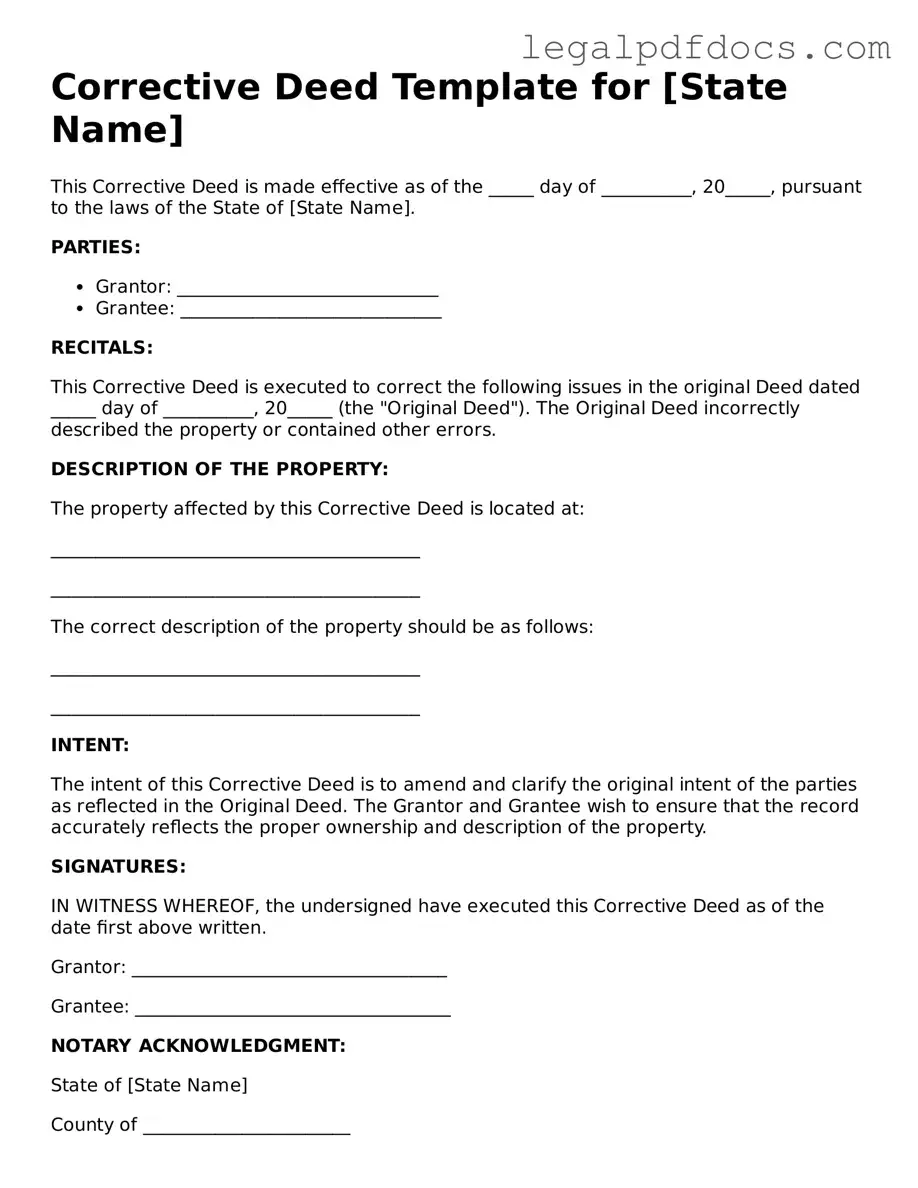The Corrective Deed form serves as an essential tool in real estate transactions, particularly when errors or omissions in previous deeds need to be rectified. Often, property owners may discover discrepancies such as misspellings of names, incorrect property descriptions, or other clerical errors that could lead to confusion or legal complications. By utilizing a Corrective Deed, these issues can be addressed efficiently, ensuring that the public records accurately reflect the true ownership and characteristics of the property. This form is typically executed by the original grantor or their heirs and must be recorded in the same jurisdiction where the original deed was filed. Additionally, it is important to note that a Corrective Deed does not transfer ownership but rather clarifies existing details, reinforcing the integrity of property records. Understanding the nuances of this form is crucial for both buyers and sellers to safeguard their interests and maintain clear title to their properties.
